Mamiya Miscellaneous Photo Page
These are mostly items which are not specific to any one model, or are otherwise unusual.
This is the 105mm DS viewing lens from above. The scale at the bottom is part of the diaphragm for depth of field preview, and is currently set to f16. The next set of numbers is a conventional fixed depth of field scale. At the top is the distance scale on the rotating front of the lens that is used as a depth of field scale. This scale is not tied to the camera focus, and the viewing lens does not focus. This is just a calculator.

The 105mm DS lens showing the flash synchonisation settings (X for instantaneous, M for flashbulb delay), and the V setting for the self-timer. The shutter lever position shows that the lens is uncocked and in contact with the shutter cocking arm on the C330 body.

This is the meter needle (moved in response to light intensity) and the ring of the matching arm (moved by adjusting the exposure meter dial) on the metered chimney finder. The metered Porrofinder uses a similar mechanism.
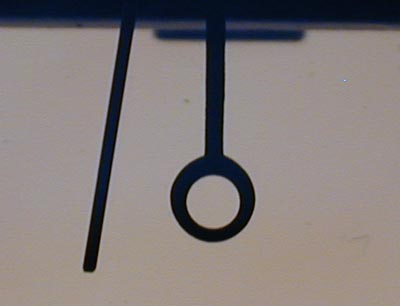
C330s body left side showing the simpler lock / unlock control and parallax / exposure compensation control. It lacks the film reminder option, which is done using a film box top holder on the back. The short focal length focus scale is below. The tip of the moving shutter is yellow.

This is the right side of a C330s showing the Single / Multi exposure control coaxial with the winder. The shutter lock is to the lower right.
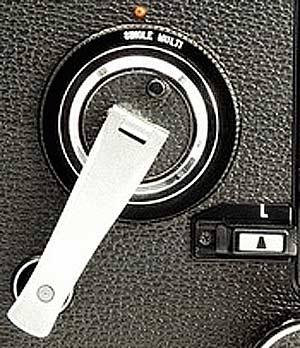
This is the last variant of the single sheet backs produced for the Mamiya TLRs. It fits the C330 and the C330f, but not the C330s or the C33. This example was ‘new in box’, but the foam used in the seals had suffered and turned to sticky tar at first touch. It will have to be replaced. The felt light trap is fine.

Inside of the sheet film holder camera back. The C330-style back hinge pins are visible on the right, and the chrome catches on the left. Note the large circular opening which exposes the camera interior when a film holder is not present.
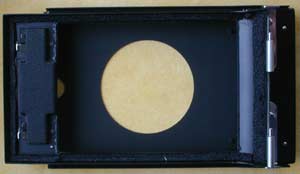
Film holder. Holders are made with numbers from 1 to 3. When the catch is folder over the number the back shows ‘E’ for exposed.
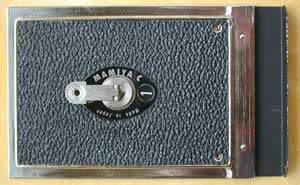
Inside of the back with a film holder in place and the darkslide partially withdrawn.
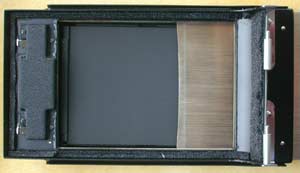
The film holder is designed to hold glass plates (practically unobtainable these days), or sheet film. The sheet film is held in a sheath that takes the place of a glass plate. This is the Type J sheath for 2 3/8 x 3 1/4 inch film. The Type D sheath does not have the slot and film guide inset on the right side - it is the full length of the sheath. The Type D takes 2 1/2 x 3 1/2 inch or 6.5 x 9 cm film.
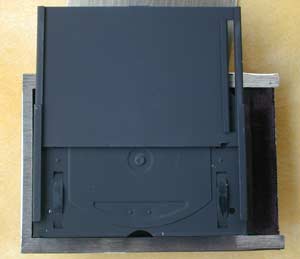
Side view of the holder with the pressure spring catch released. This is normally done on the camera to press the film against the camera film plane.

The back catch is slightly obscured by the film holder housing and is not easy to release. The back is stiffer than the standard back and appears less prone to uneven latching.
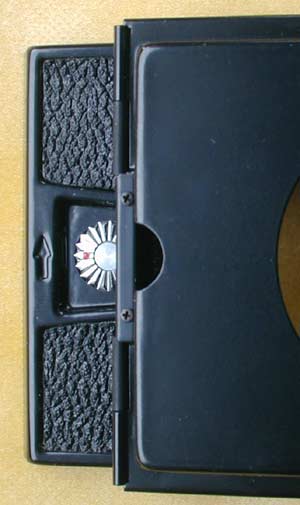
The back open, and this the holder retaining wire released.
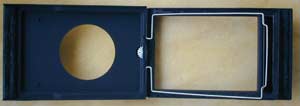
The holder installed in the back, and the retaining wire clipped in place. Note the two holes on the holder back towards the right of the picture. These mate with two matching pins on the outer back. Older film holders do not have this feature and will not fit this back.
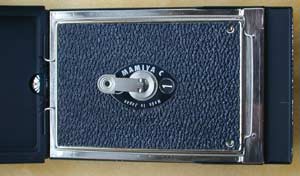
The back closed with a holder in place. The pressure place catch and the holder identity number can be accessed through the central hole.
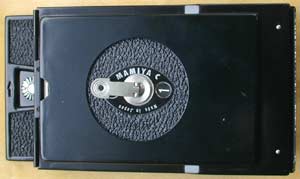
The back, with holder, fitted to a C330. Note the amount of projection below the base of the camera which will influence tripod selection.
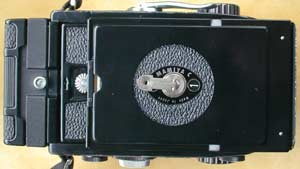
A side view of the back with holder on a C330. The dark slide has been partially withdrawn to show the clearance needed for a tripod.
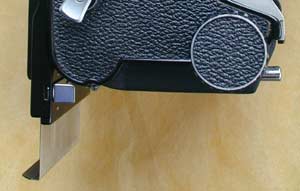
The C330/f waist level finder has chrome support struts to keep the side flaps in place. These are not present on earlier variants. The flip-up magnifier remains unshaded.
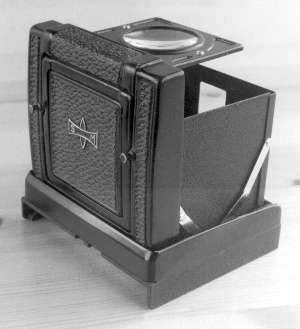
Compare this C330s waist-level finder with the earlier one featured above. This has folding sides and the flip-up magnifier fully closes the top, making for less extraneous light.

The C330s has a lug mount for the strap, as opposed to the more general purpose strap slot used on the earlier cameras.

The metered chimney finder is a large item, though since it is largely empty space inside it is very light. The main benefit is the large eyepiece and adjustable diopter focus. The meter is a match needle type, and the measurement has to be manually set on the camera. Plus the lens maximum aperture has to be set for the meter to read correctly.

The Clip-on distance scale was intended to be mounted in the camera flash shoe, and connected to the lens panel of the camera. As the camera was focused closer, the lens panel drew out the rod on the dial scale. It only worked for the 80mm, but had the advantage that it could be read from the top of the camera.
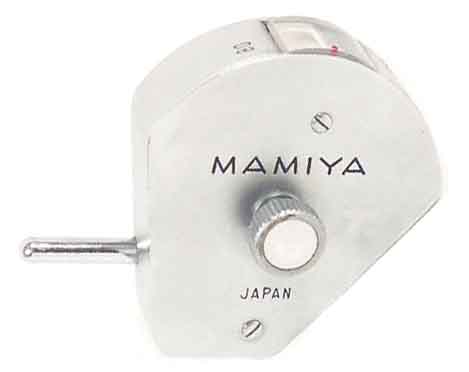
The Mirror Finder is an unusual item. It consists of an eye piece and an internal 45 degree mirror. Since the image on the camera focus screen is normally the right way up, left to right reversed, this finder would give an upside down, left to right reversed image, rather like a view camera. It does not appear in later system lists, and probably pre-dates the C33.
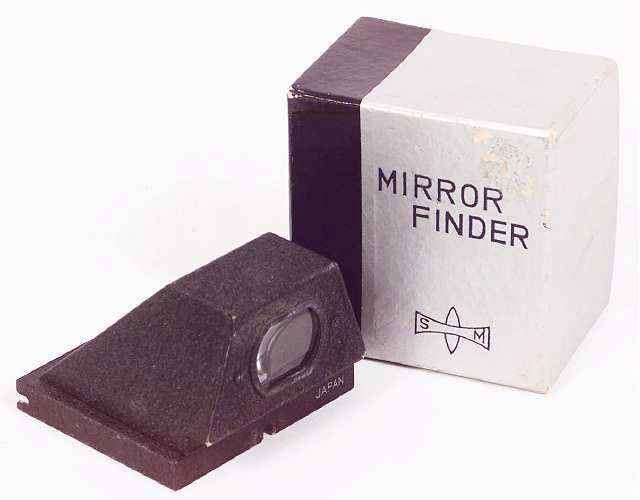
The Paramender is a device designed to shift the whole camera to move the taking lens axis into line with the viewing lens axis when doing close-up work where parallax is an issue. This is the first major model where the platform is raised and lowered using a knob.
There is an earlier version where the upper and lower tripod screw axes are not in alignment, and later versions with a lever for the height adjustment (Paramender 2). The Paramender 3 incorporated a tilt function.

The full prism finder uses a glass prism to provide a right-way up, left to right correct image at eye level. As is to be expected from such a large piece of glass, it is heavy. The eye piece incorporates some diopter adjustment.
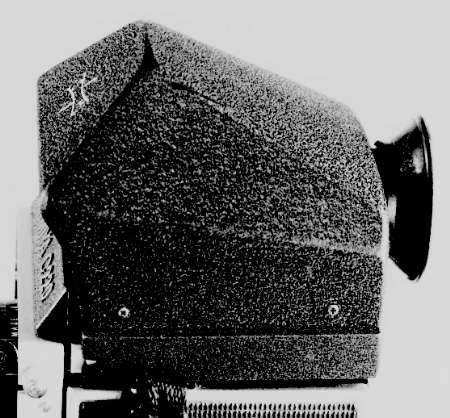
The earliest Mamiyaflex did not have a flat base, which made mounting on a tripod difficult. This adapter was designed to fit onto the base of the camera and provide a tripod socket that cleared the ‘chin’ where the focus knobs are situated.
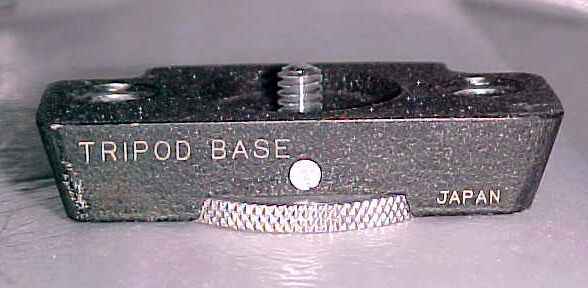
The ‘L’ Grip is a popular accessory that provides a solid hand grip for the left hand and a flash shoe further off-axis than the body shoe. The 45 degree tilt of the shoe does two things - it moves the flash gun away from the waist-level finder (and the photographer’s head) without moving the balance too far left. It is also possible that this gives slightly better coverage when using wide angle lenses and flash guns designed for 35mm landscape format.
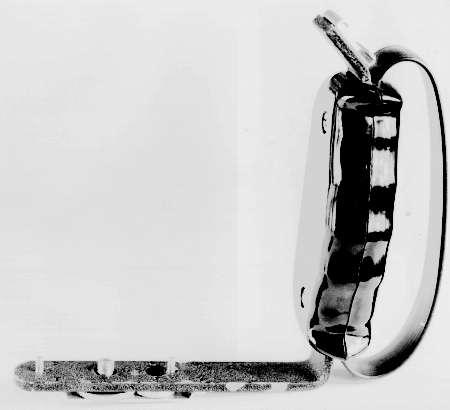
The C330, C330f, and C330s all have a second shutter release on the ‘chin’ of the camera. This ‘L’ grip features a trigger on the grip that operates a lever that falls in front of the second shutter release. It also features an adjustable flash mount. Comparing both of these grips shows the two pins either side of the tripod screw that are common to Mamiya medium format cameras, including the M645 and RB/RZ series.
An earlier version of this grip used a cable release from the trigger to trip the shutter. It was designed for cameras up to and including the C33, though it also works on the later models.
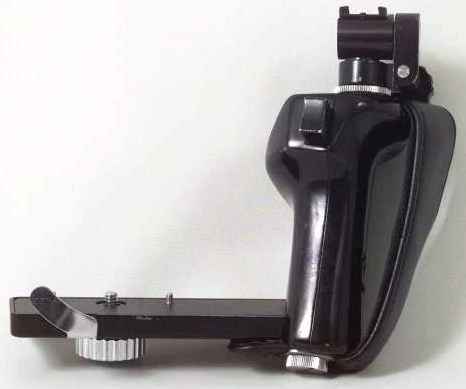
Another unusual item. This focus knob adapter is essentially a larger rubber knob that fits over the standard focus knob (there are some differences in knob sizes - verify compatibility before purchase as it was intended for the C330s and C220f). The idea is that the larger size allows finer focus control because the larger diameter provides both mechanical advantage, and increased motion of the knob circumference. It is rather like the wheel from a child’s toy. This has always been a weakness of the TLR design, as the linear focus scales are too small to use accurately.
The DSF/DSM-2 was a slightly more sophisticated device than a simple rubber wheel. The F or M refers to the calibration in feet or metres. This came with a set of calibrated scales for the mid-range lenses (65, 80, 105) that allowed for finer focus than the scales on the body. It relied on the distance travelled by a point on the circumference of the knob being much larger than the movement of the lens panel. This is the same method as the version for the RB67.
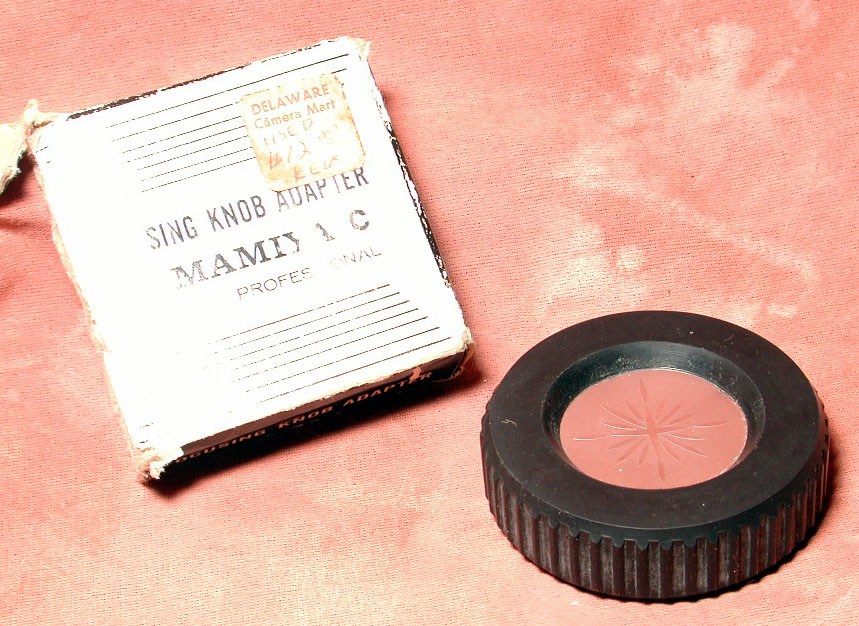
All the waist level finders with a sports finder aperture can accept masks to match the field of view of the longer lenses. Earlier finders did not have a secondary aperture rim to match the 65mm lens, so the negative lens unit was available to allow a wider sports finder view. There was no equivalent for the 55mm.
